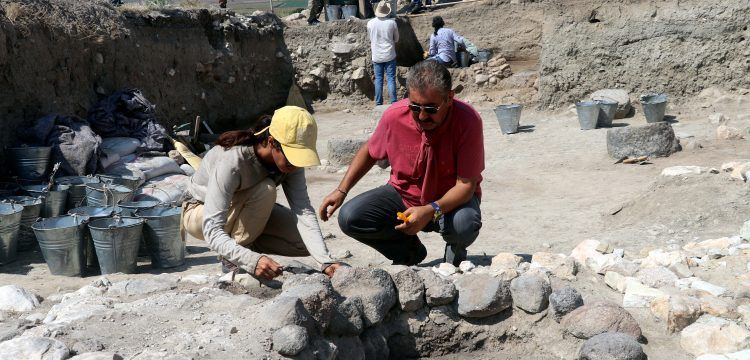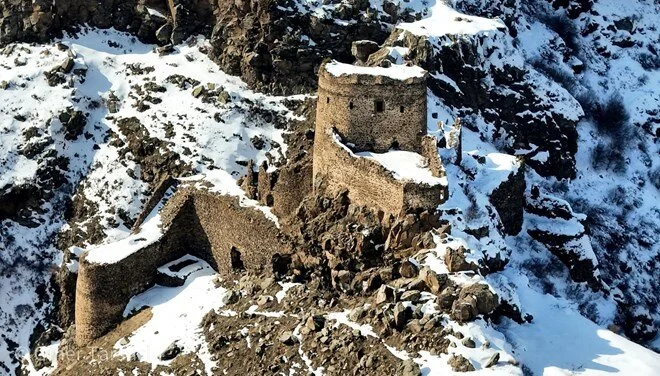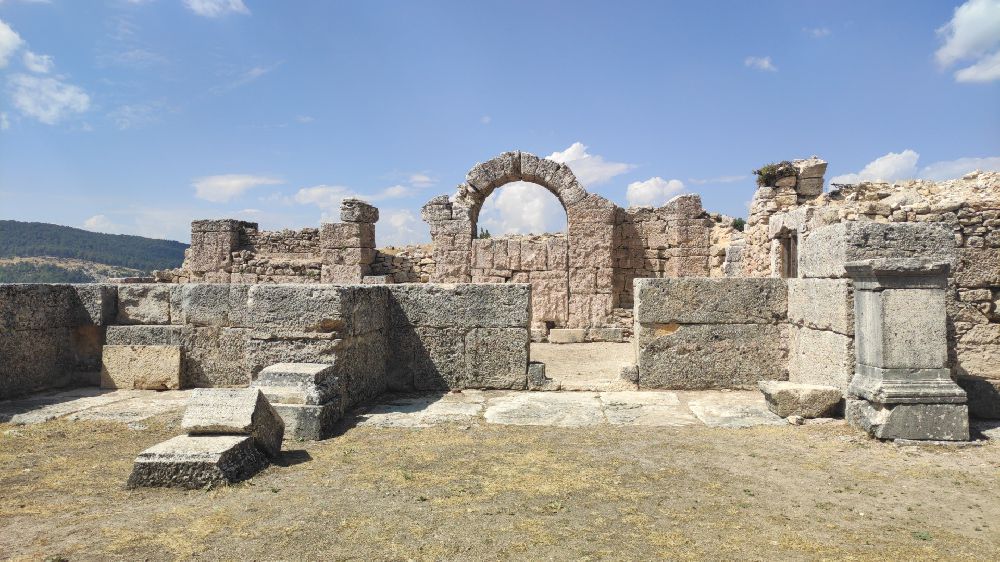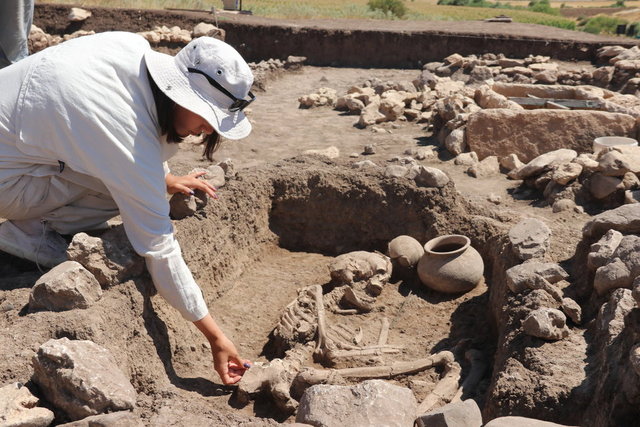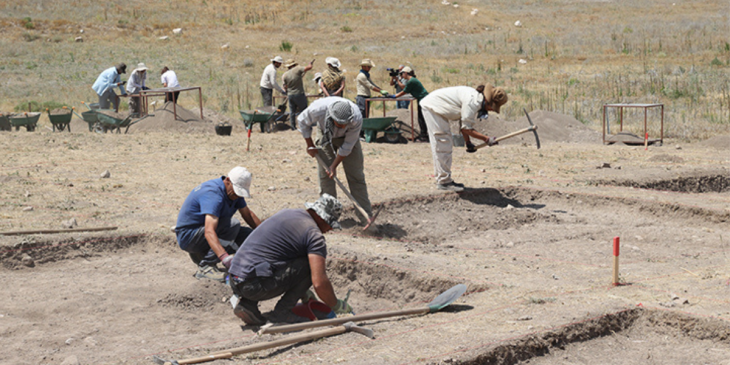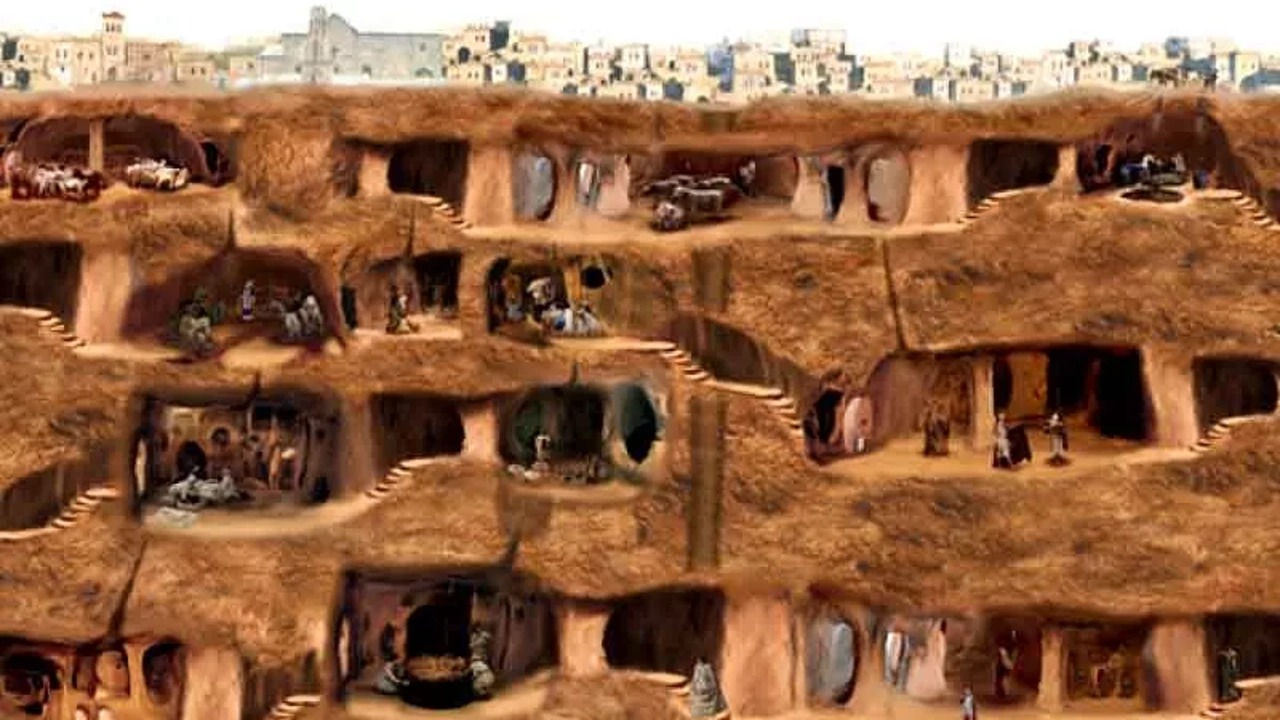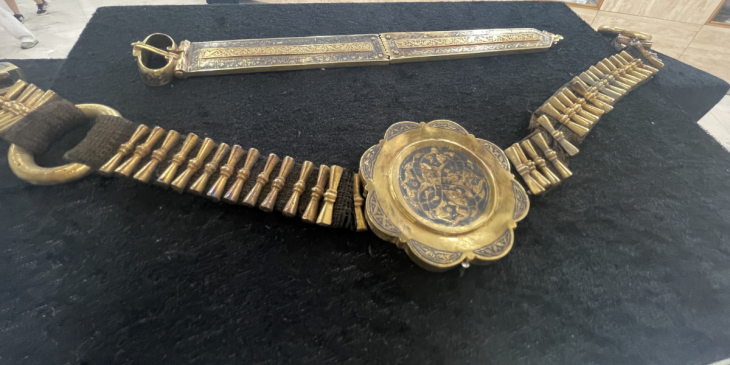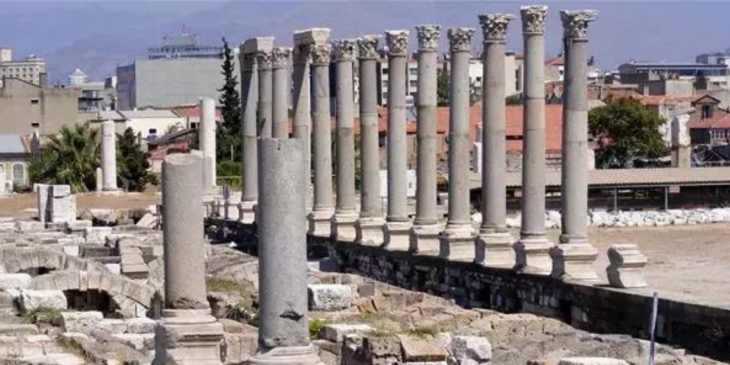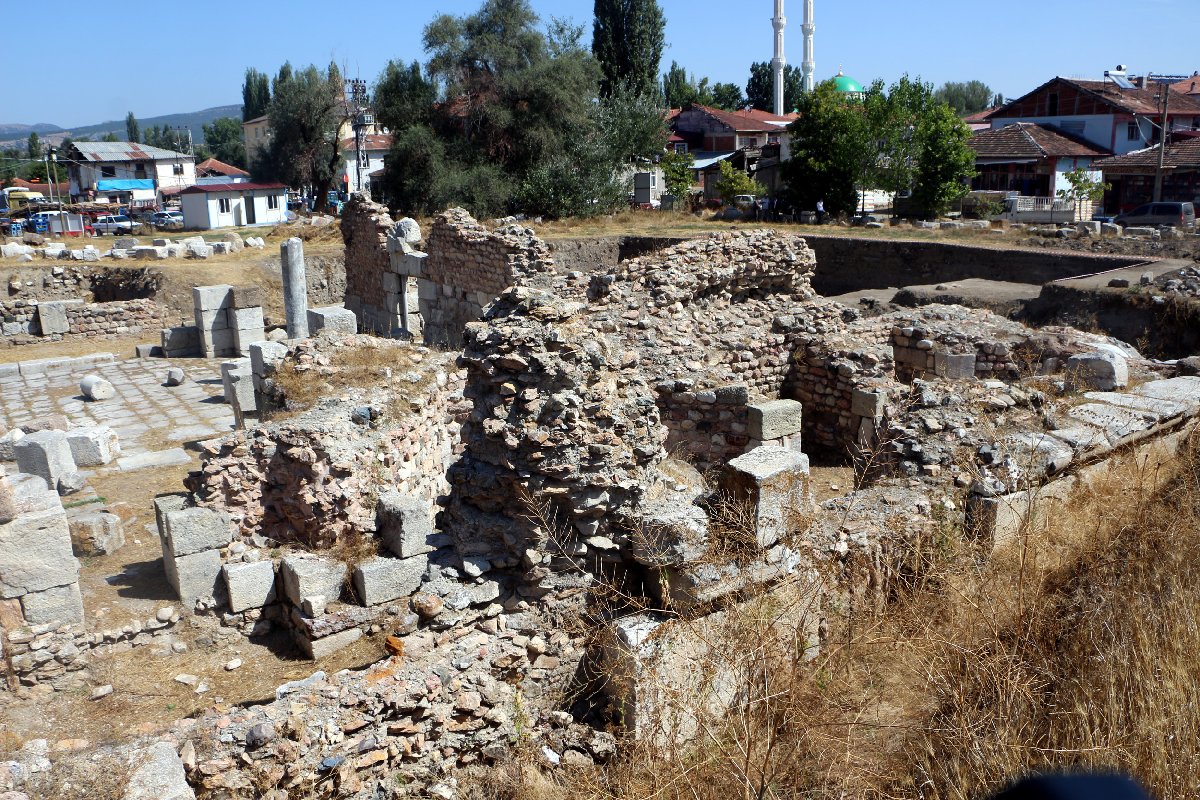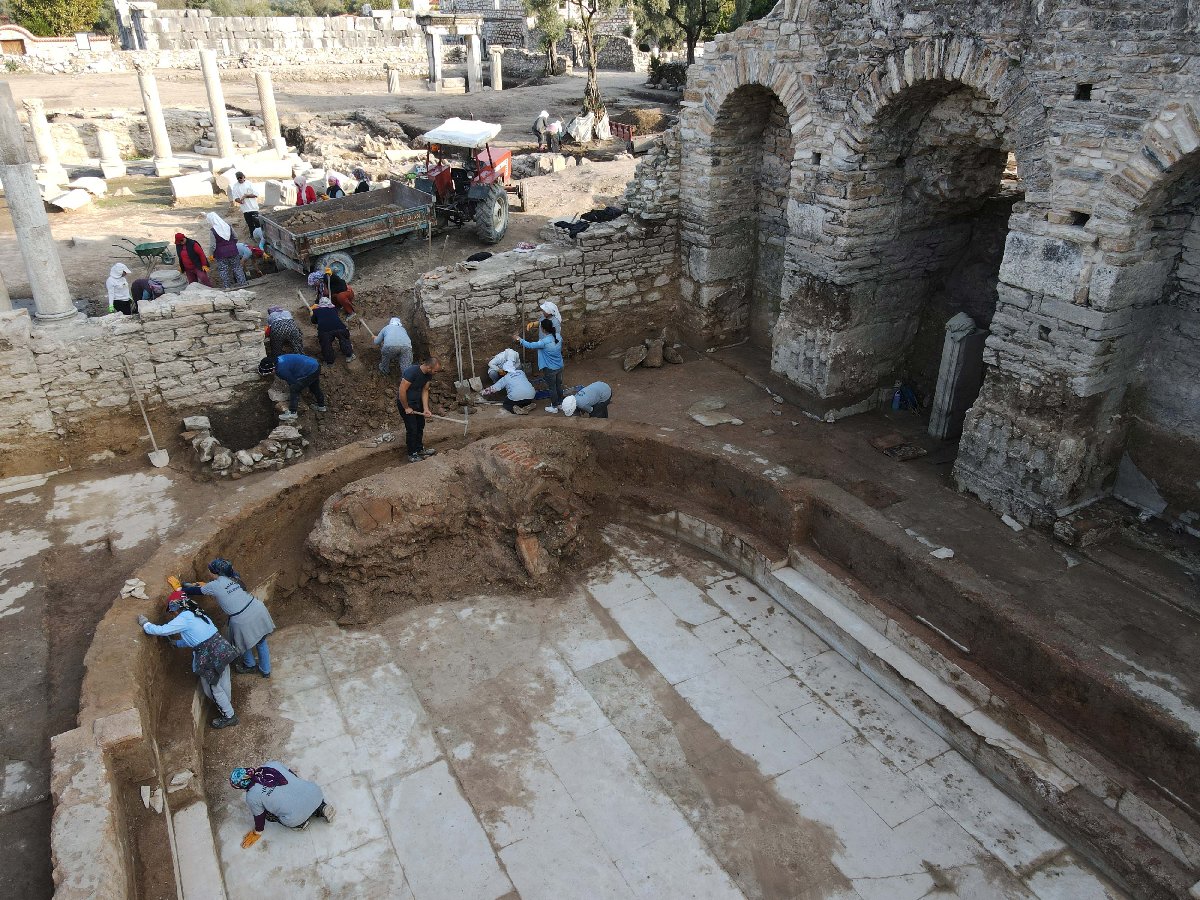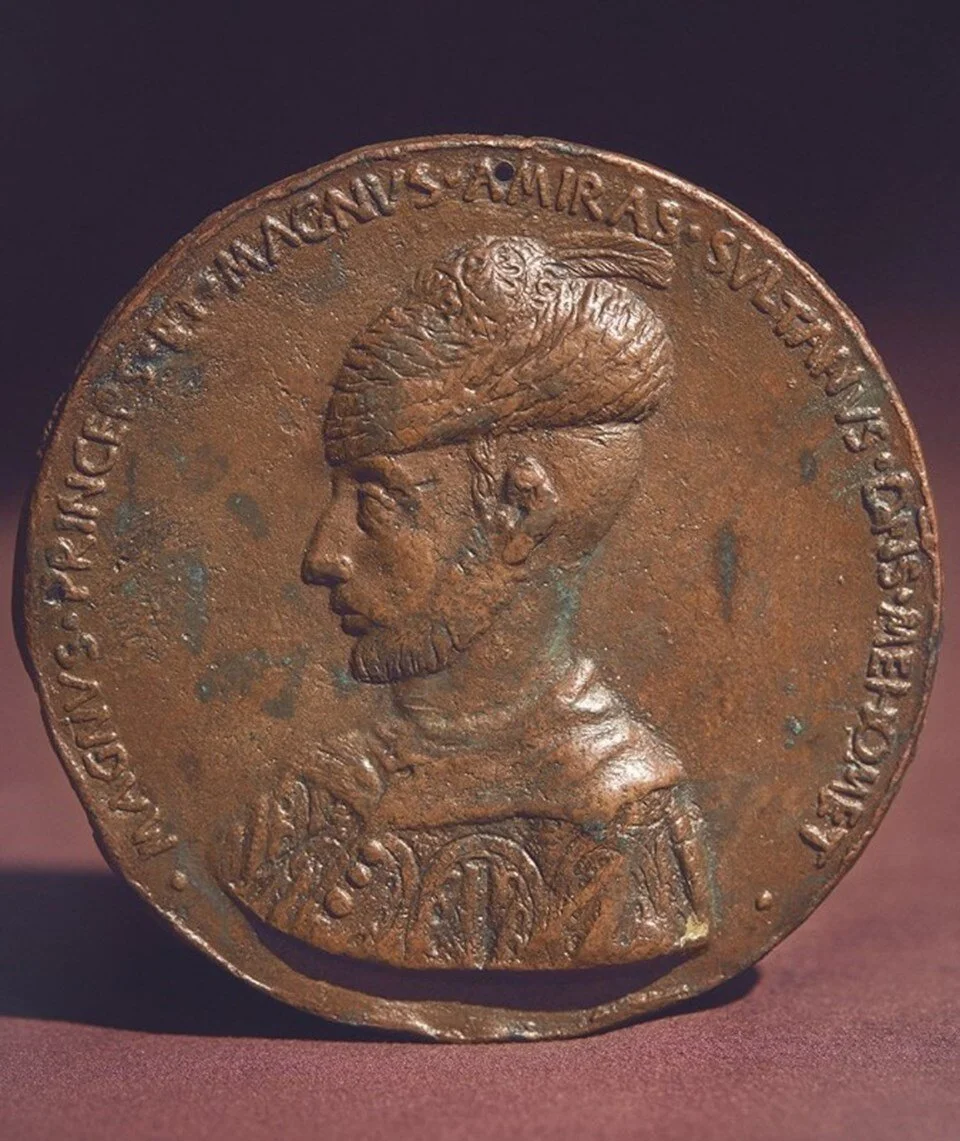Two knives with wooden handles, believed to belong to the Persians and Medes who ruled between 500-600 BC, were found during excavations at Oluz Mound in the Göynücek district of Amasya.
During the excavations that have been going on for 18 years in Oluz Mound, the remains of the Persian monumental road, Persian type column bases and Ateşgede (Fire Temple) were unearthed.
The throne hall Apadana, a structure that complements the Achaemenid architectural character, was unearthed in the 2018 period under the direction of Prof. Dr. Şevket Dönmez, a faculty member at Istanbul University, Department of Protohistory and Prehistoric Archaeology.
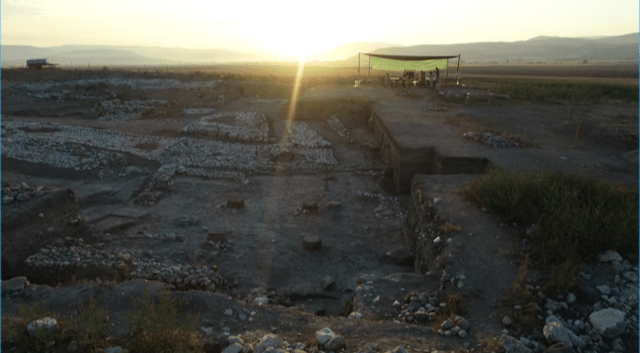
Apadana, a multi-columned hall, is a structure unique to Iranian culture and was discovered for the first time in a Persian settlement in Anatolia.
The discovery of 2 knives with wooden handles belonging to Persians and Medes in the last 2023 excavation season further emphasized the Persian and Median influence centered on Oluz Mound in Anatolia.
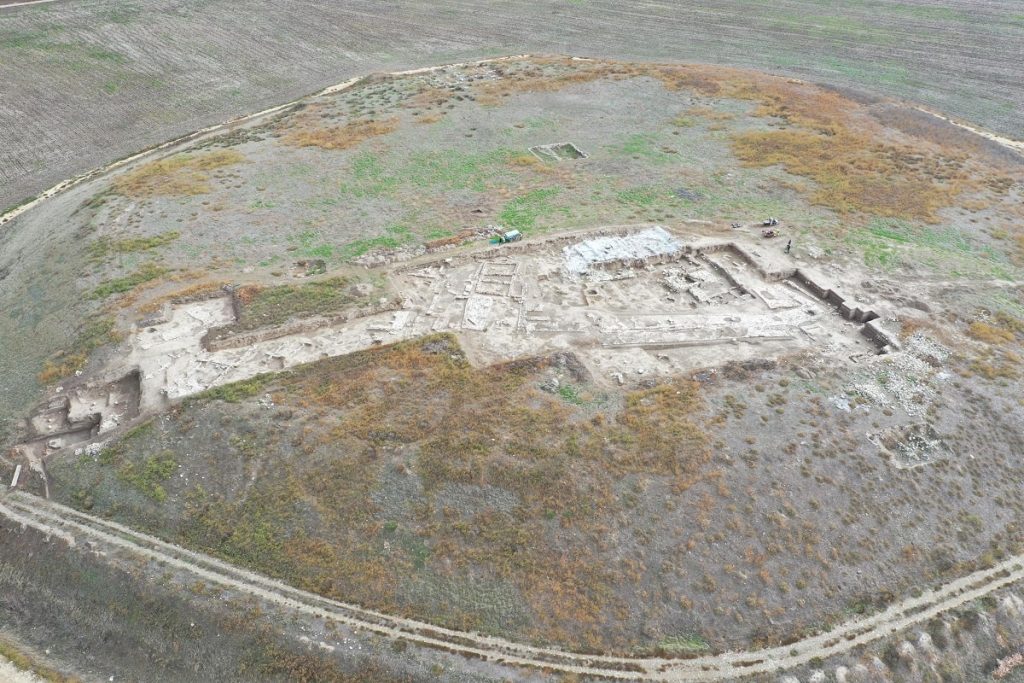
“I believe we will encounter many more Median and Persian artifacts at Oluz Mound”
Prof. Dr. Şevket Dönmez, Head of Excavations, stated that they came across very important findings in terms of the Young Iron Age, Anatolian Young Iron Age and mining art during the recent excavations at Oluz Mound:
“The most important of these are artifacts from the Median and Persian periods such as cutters, knives and perhaps daggers. When we observe them technically, we see that they are made of iron. We can observe that the wooden handles are still intact until today, and we can understand that they are still attached to the wooden handle with today’s rivets.”
Stating that metal was a very valuable object that was very difficult to find, process and own during the period when the Persians and Medes ruled, Dönmez continued as follows:
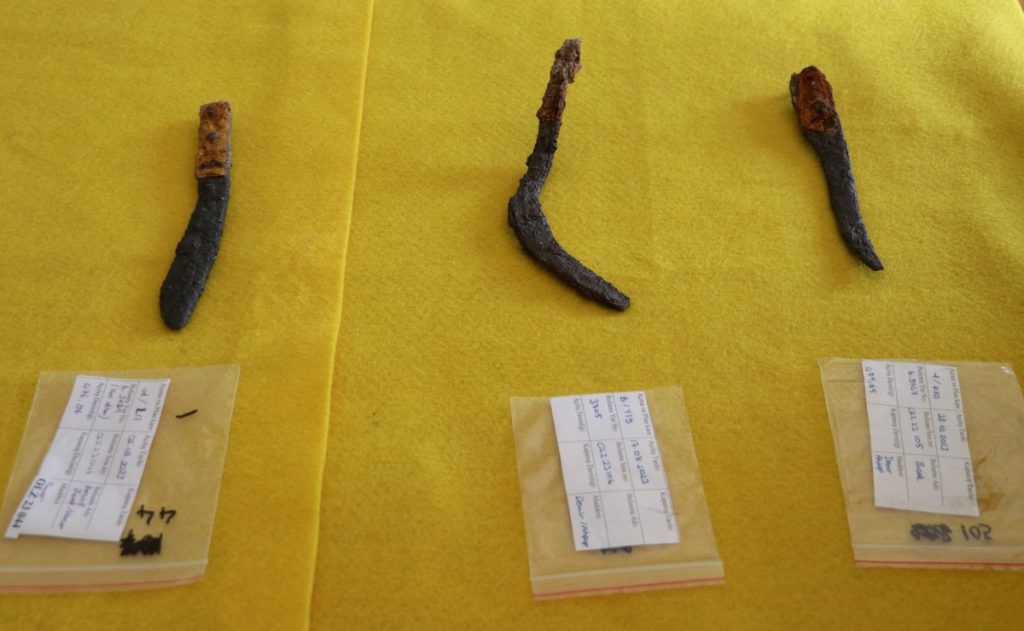
“In other words, if you own an automobile today, it means that you had 2-3 knives at that time. At this point, we understand that Anatolia, together with Iranian elements, used iron very well in the Young Iron Age and transformed it into a knife art, a cutting and metal art. The fact that the wooden handles have survived until today, especially here, is probably related to the type of wood that makes up the wood. We have not yet carried out further analysis studies, but we will also carry out studies on these and we will learn the types of wood used in wooden handles.”
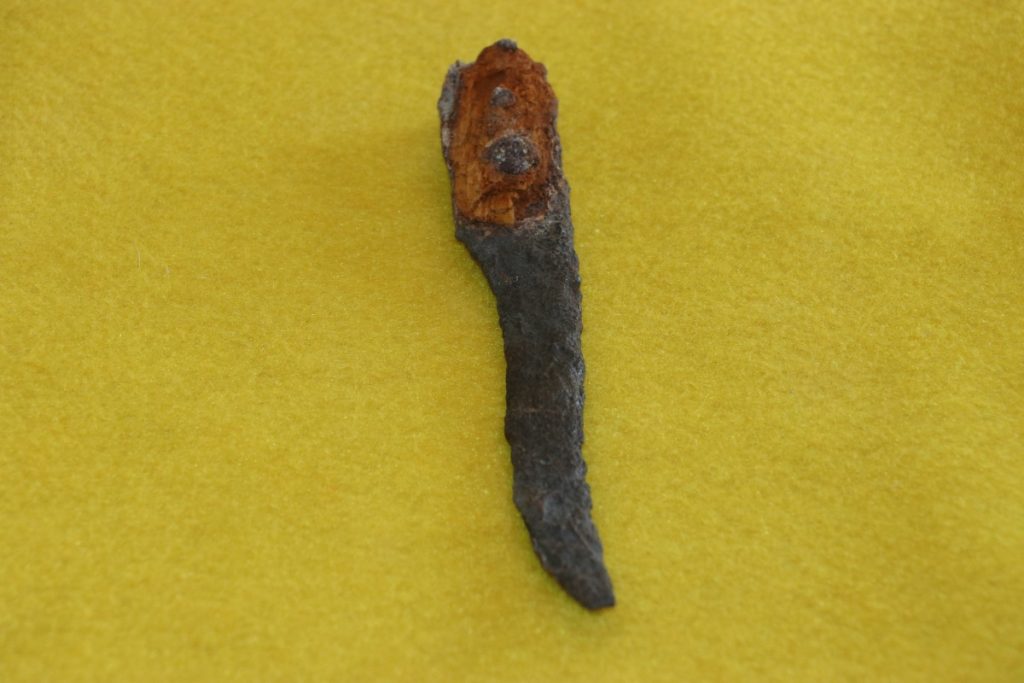
Pointing out that the knives were manufactured between 2,500 and 2,600 years ago, Dönmez said, “At this point, we think that there was probably a workshop in Oluz Mound. We anticipate that these were not bought from merchants or people who trade in this business. In other words, all of them have wooden handles, all of them are riveted and have very good workmanship. Our studies in this direction will continue, and I believe that we will encounter many more Median and Persian artifacts in Oluz Mound.”

